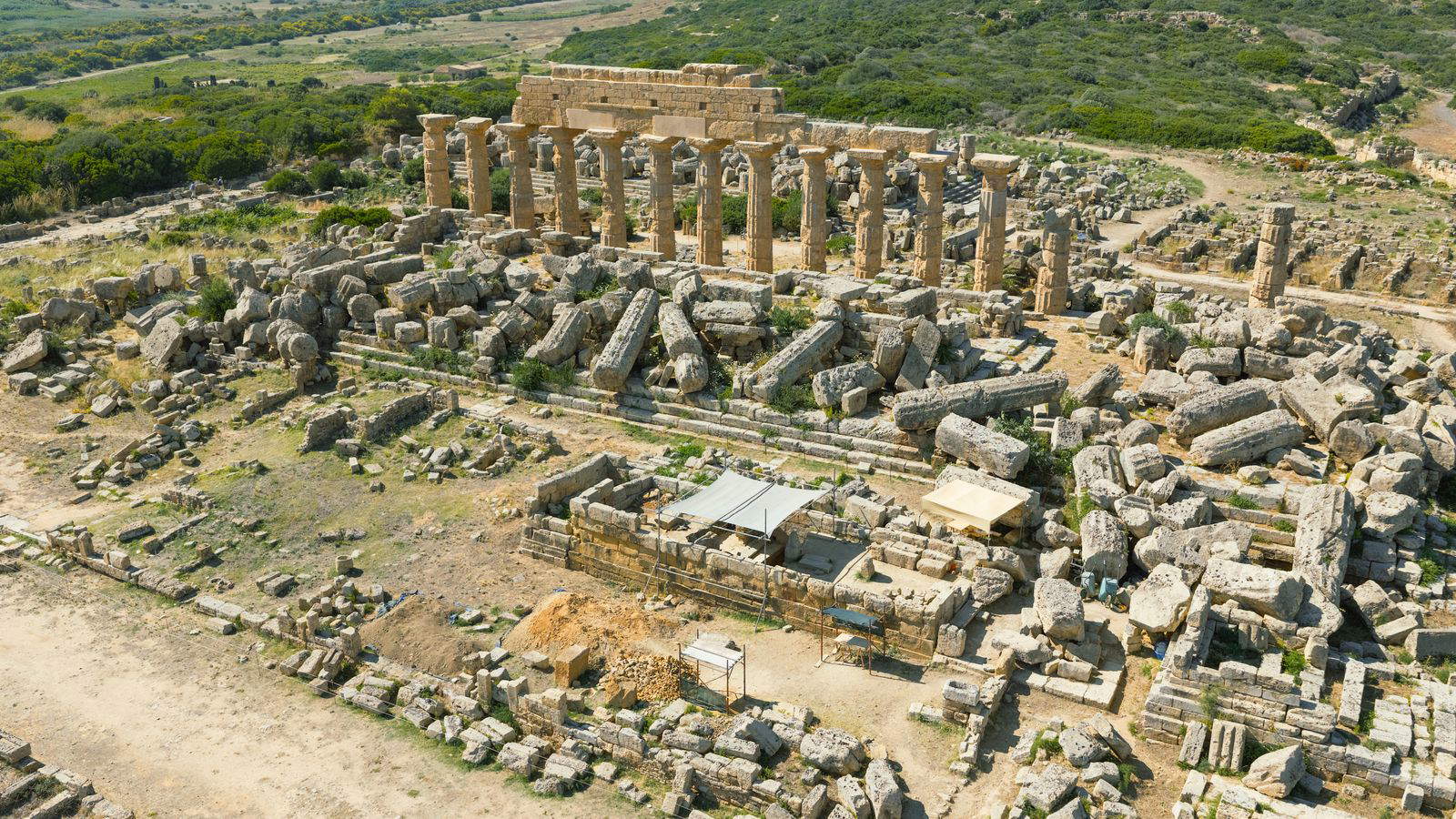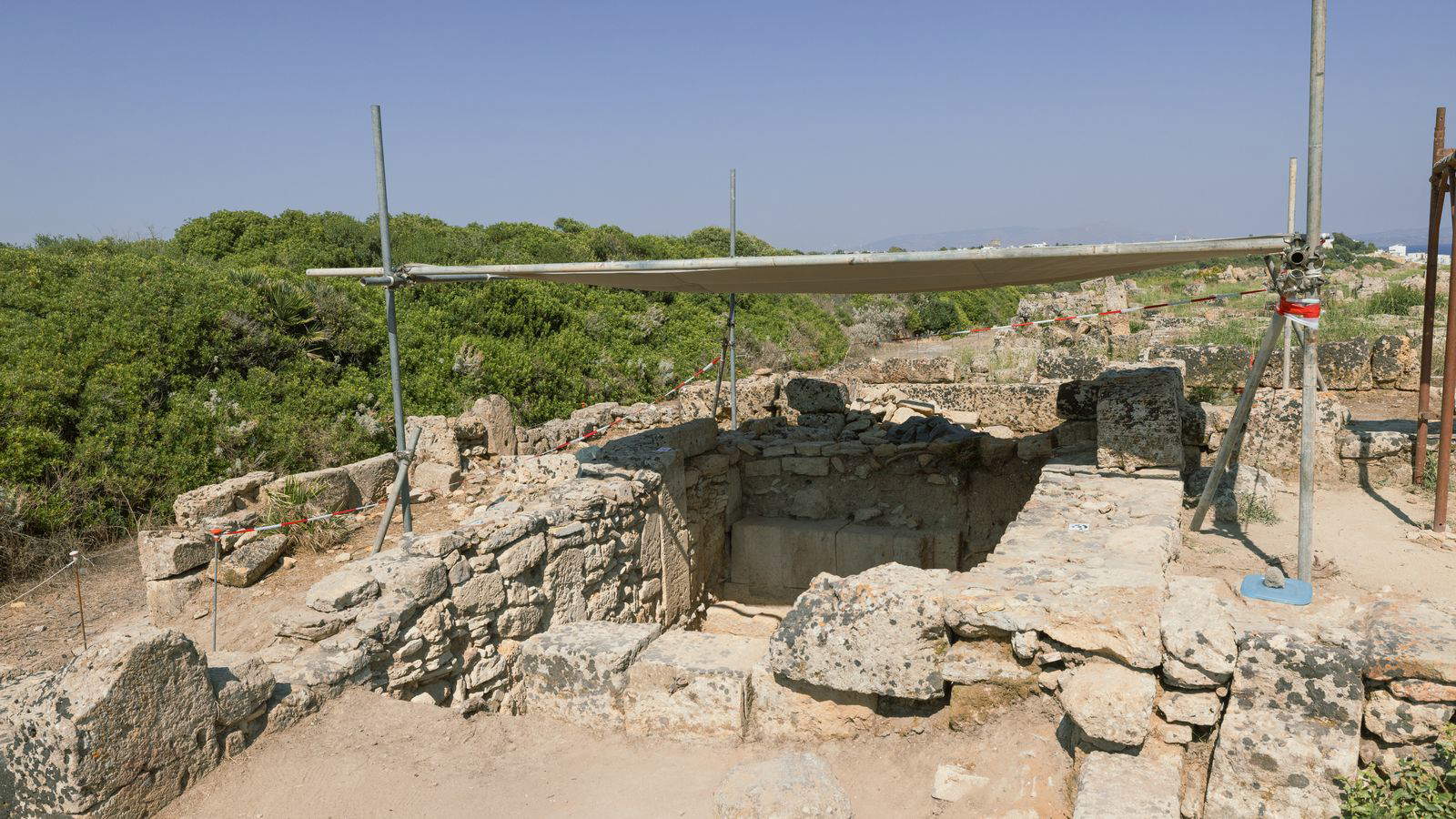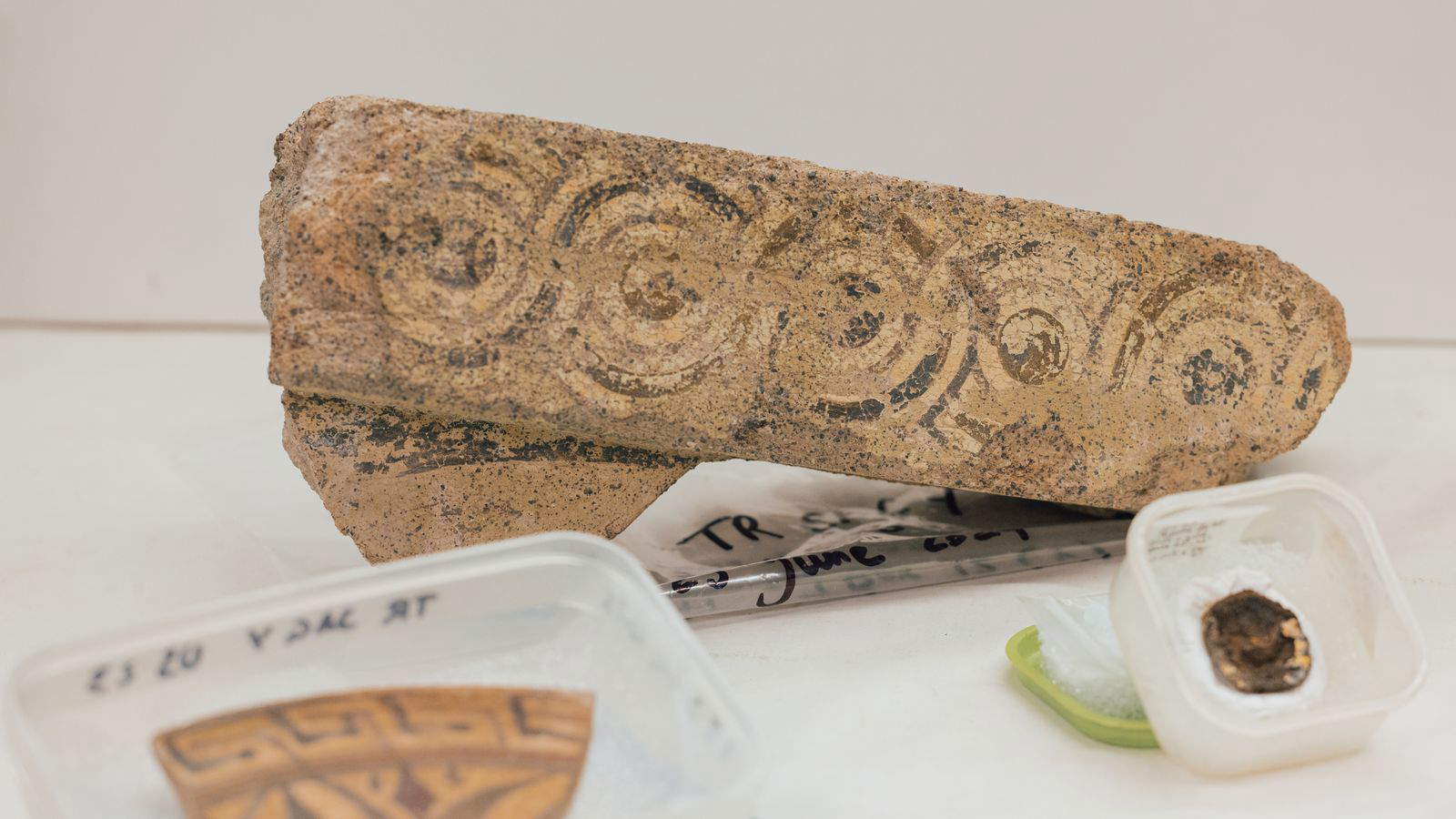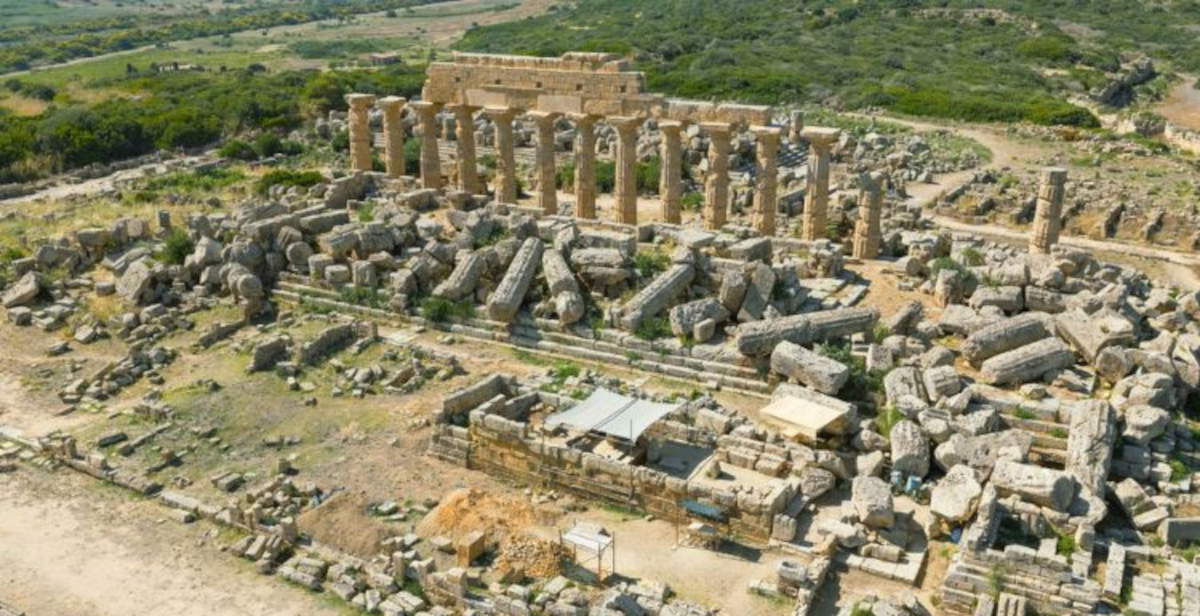In Trapani, theacropolis of Selinunte is being enriched with new archaeological evidence thanks to a recent excavation campaign that revealed one of the city’s most sacred and ancient spaces: theadyton of Temple R. Theadyton was an area of the sacred building reserved for the officiants, and where the statue of the deity was usually placed. The temple, recognized as the oldest in stone on the entire site, dates back to the dawn of the Greek polis, and around 570 BCE.B.C. it housed significant ritual practices, evidenced by the discovery of a silver ring, probably offered by a woman belonging to a high class, as a votive gesture addressed to the deity.
The discovery of the ring was part of an exceptional votive deposit found under the original floor of the sanctuary, at the bottom of the naos, or main room of the temple. This deposit included more than 300 objects, including 27 spearheads, loom weights, fine pottery and other precious artifacts, testifying to religious practices and the relationship with the city’s female patron deities. The discovery contributes to a more detailed understanding of the rituals associated with women’s worship in Selinunte and allows for more precise dating of the growth of the urban sanctuary in the early decades of the city’s life, founded around 628 BCE.

“The most ancient Selinunte is coming back to light,” said Councillor for Cultural Heritage and Sicilian Identity Francesco Paolo Scarpinato, “the most ancient Selinunte. First the gate and the walls, now the sanctuary, all exceptional finds to read the origins of the city.”
“We are bringing to light the oldest soul of Selinunte, that space around which the first community was built,” explains Archaeological Park director Felice Crescente.
The area targeted by the excavations has been surprisingly intact and has yielded numerous artifacts related to ancient ceremonies, including spearheads driven into the ground, tangible evidence of the strong spirituality and sacredness that pervaded this place from the very beginnings of the polis. The excavation work is being conducted by the Institute of Fine Arts of New York University and the State University of Milan, in collaboration with the Selinunte Archaeological Park, under the direction of archaeologist Clemente Marconi. The work has confirmed the symbolic and religious importance of the entire sacred area, reaffirming what German scholar Dieter Mertens has already hypothesized about the distinctive and early role of the sanctuary in the life of Selinunte.


The excavations focused mainly on the area of the large urban sanctuary and in particular on Temple R, revealing a monumental access dating back to the 5th century B.C. in the northwest corner of the sanctuary (referred to as SAS W). The stratigraphic sequence of this area has remained almost intact from the pre-Greek phase to the Middle Ages, returning significant finds, including the cusp of an iron spear still embedded in the ground, underscoring the continuity of a war or protection ritual over the centuries.
The most significant discoveries were made in the center of Temple R (SAS Y), where the access to the adyton, preserved in remarkably good condition, was identified. This part of the temple, being the most sacred and private place, was protected by a barrier that prevented direct access but allowed worshippers to leave votive offerings without entering. It is likely that such rituals were addressed to female deities such as Demeter and Kore, central figures in the Selinuntine pantheon and symbols of fertility and protection.
The discovery of the adyton and its votive deposit represents a key element in understanding the religious dynamics of Selinunte, highlighting the importance attached to female worship and the central role women may have played in devotional rituals. The richness of the materials found, their location and the perfect preservation of the archaeological structures make it possible to reconstruct a detailed picture of the functions and practices of one of the most ancient and significant sanctuaries of Magna Graecia.
 |
| Selinunte, major discovery: unearthed a large votive deposit in Temple R |
Warning: the translation into English of the original Italian article was created using automatic tools. We undertake to review all articles, but we do not guarantee the total absence of inaccuracies in the translation due to the program. You can find the original by clicking on the ITA button. If you find any mistake,please contact us.